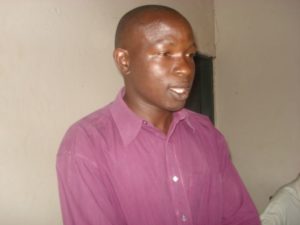A Tribute to HIV+ Mothers
 They say men build houses. But a house is not a home. Women build homes.
They say men build houses. But a house is not a home. Women build homes.
I come from a country where 3 in every 5 homes are headed by a woman who has to play a mother and father figure all her life. Growing up I wasn’t any different. Let me share what makes my mum worth celebrating this day.
Memories are still fresh when she started a pancake and cassava chips business which barely lasted a month. So weak and sick she would cry in pain all night yet wake up 5 am–as we children still enjoyed our sleep–to go buy tomatoes, onions and mukene (fish) which she sold on the veranda. But nobody cared to buy because nobody wanted to come close to a woman rumored to be HIV positive. Soon it was all rotten. Still she never gave up.
I recall the day she was sick but left us in the house, braved the rain and walked a long distance just to borrow a little money from a friend so we wouldn’t starve another day. She returned soaked wet with no money in her hands. But at least she tried. We slept hungry.
Let me share what makes my mum worth celebrating this day.
I watched as people disrespected her and threw insults at her in our face and we sat so defenseless because we had no man to stand in the gap and raise his voice but still with her we felt a sense of protection. Not once, not twice she took the blame for our wrong doings and even with the little strength she had she made sure she never lost her obligation in being a mother and father.
I often sat down and wondered how we got there. What happened to our commuter taxis? What happened to the over 20 people we hosted in our house in a month? What happened to the people that took pride in us calling them aunty but now shied away or cautioned us not to?
It is now that I appreciate the woman that saved up two months just to have transport to come visit me with no pocket money, the woman that got us all we wanted when she got her life back in place, the woman that believed in all I ever wanted to do and be and supported me in the dreams I had even when nobody saw them coming, the woman that still called me son when the whole world judged me by my attitude and way of life, the woman that came from her death bed to travelling the world giving hope to those on their death beds.
I’m proud I was raised by you, Mum, you deserve to be celebrated.
 Living with HIV/AIDS is a journey started by many kids knowingly or unknowingly. To some, it was mythical truth they realized later to be real. Mine started unknowingly. At the age of 11, the truth was uncoated for me to taste its bitterness, it felt like the world came crippling down on my head. Being HIV positive at that age was the last thing I ever thought of. I hated and blamed everything and everyone I could; lived indoors in a community that made life more complicated by pointing fingers, the ones who could have given me counsel at school–my teachers–always lit fire on me by calling me names which other children adopted.
Living with HIV/AIDS is a journey started by many kids knowingly or unknowingly. To some, it was mythical truth they realized later to be real. Mine started unknowingly. At the age of 11, the truth was uncoated for me to taste its bitterness, it felt like the world came crippling down on my head. Being HIV positive at that age was the last thing I ever thought of. I hated and blamed everything and everyone I could; lived indoors in a community that made life more complicated by pointing fingers, the ones who could have given me counsel at school–my teachers–always lit fire on me by calling me names which other children adopted.
